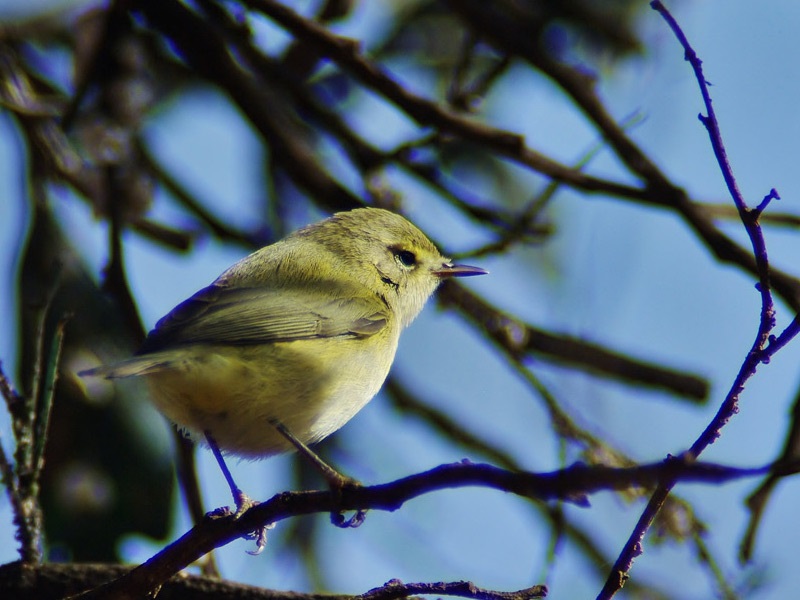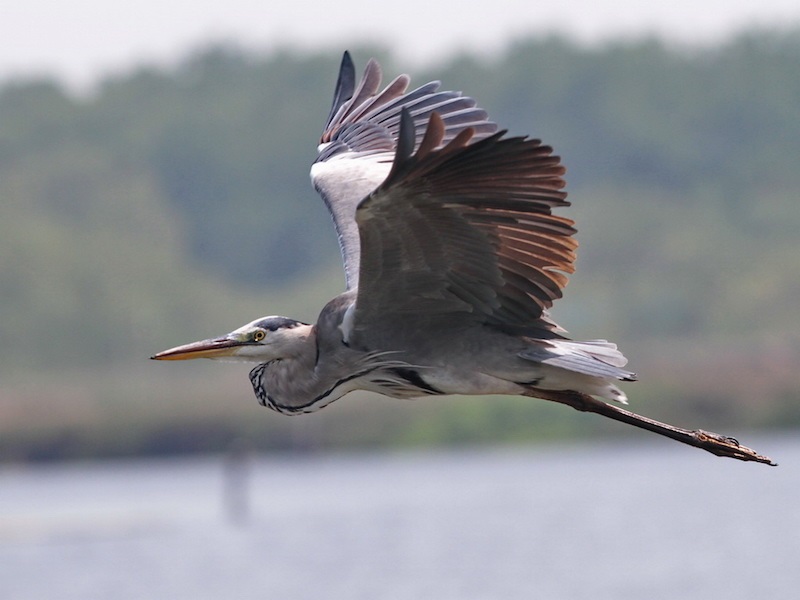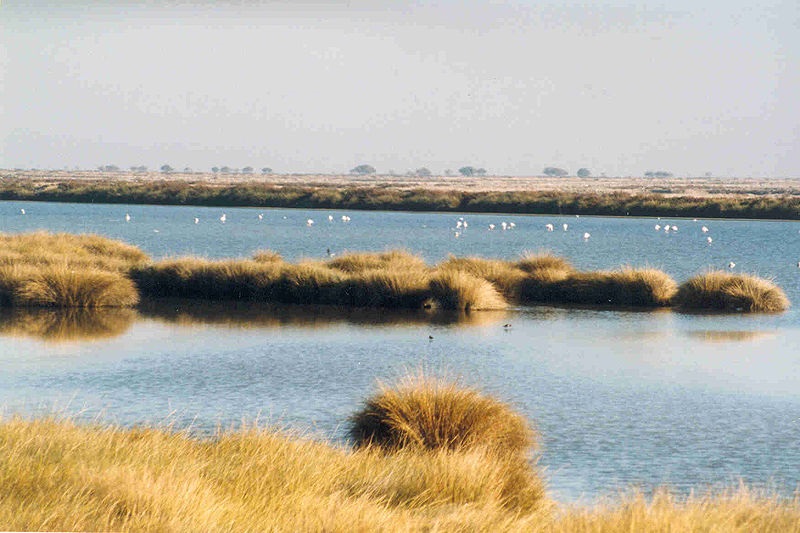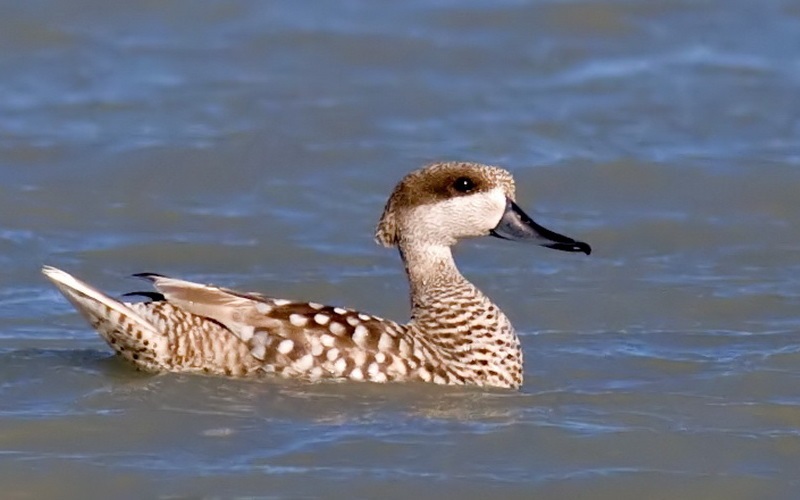Andalusia is one of the most attractive areas around the Mediterranean, owing to the good climate and its natural beauty as well as its rich history and culture. But its impressive historic and cultural heritage are outshone by some of the richest natural areas in the Palearctic; a meeting point of Europe and Africa, which still offer breathtaking landscapes and an unusual fauna and flora.

The mild Mediterranean clashes, in Tarifa, with the wild waves coming from the Atlantic Ocean, extensive salty lagoons and wide rivers, the highest ranges in Iberia climbing more than 12,000 feet above sea level, evergreen forests, badlands, fertile plains, wild olive trees, oaks, pinsapo firs, high cliffs, wild beaches and the most important sand dunes and marshes in Europe can be found in the region.
While the region is excellent for reptiles and mammals most are shy and retiring and inhabit areas difficult for the tourist to access, but the birds are everywhere and so are butterflies and dragonflies.

A rich avifauna have settled here, more than 250 species are present throughout the year. Doñana area and other important areas offer Andalusian and Iberian specialities: Andalucian Hemipode, Spanish Imperial Eagle, Glossy Ibis, Spoonbills, White-headed Duck, Red-knobbed Coot and many others… but which are the best places for birdwatching in this land?
You can enjoy a dream birdwatching holiday in Andalucía – remember that summers are hot, so its best to avoid the midday heat and relax with a cool drink and enjoy birding mornings and late afternoon and evenings.

Practically the whole of Andalusia has good birding, below are just a few of the very best places to see the special birds.
Donana National Park (Map)
Considered as the most important wetland in Europe and one of the best places for birds in the whole of the Palaearctic region, both for the number of species recorded and for its breeding & wintering importance. Between 300,000 & 400,000 birds settle in Donana every winter. More than 300 species of birds have been recorded in Donana, being the most important area in Europe for wintering geese and the second most important breeding area for Spanish Imperial Eagle in the world. Hundreds of birds including raptors, passerines, and sea or wetland birds are seen here, including 80% of all endemic Iberian birds, which are not as easy to see outside the area. Best times to go birding there is from November to June.
Dry Plains of Granada & Almeria (Map)
The Eastern part of AndalucÃa has some of the best badlands and dry plains in Iberia, unbeatable areas for discovering Larks and other arid area specialities. Try to avoid summer season as it is best from November to June, and watch in the first hours of the day. It is not an easy place for birdwatching, however, it is a rewarding experience. The Hoya de Baza & Guadix (Granada) or Tabernas & Cabo de Gata are the best spots. You need know bird calls sound to easily locate them. Some of the most attractive birds of the area are Great Spotted Cuckoo, Red-necked Nightjar, Pallid Swift, Alpine Swift, European Roller, Dupont’s Lark, Lesser Short-toed Lark, Thekla Lark, Spanish Sparrow, Trumpeter Finch and recently, for the first ever time in Europe, a small breeding population of Cream-coloured Courser.
Marismas Del Odiel & environs (Map)
This wetland with wide marshes, sandy spits, coastal dunes, pinewood forests and freshwater lagoons is outstanding for its breeding colonies of Spoonbill (more than 400 pairs) & Little Tern (more than 350 pairs). It is an excellent site for watching plovers, seabirds, cormorants and migrant passerines.

Serrana de Ronda (Map)
Comprising of high limestone mountains, river valleys and ancient forests this gem of a birding site has been largely overlooked. The local infrastructure allows for ease of travel and investigation throughout the whole range of diverse habitats present here. Over 240 species have been recorded in the area, being a particularly high number in an inland zone with no wetlands. The mixed oak forests are home to a range of interesting warblers such as Subalpine, Bonelli’s and Orphean Warbler with the elusive Iberian Chiffchaff also present. Of course the extensive forests are also favoured nesting places for both Booted and Short-toed Snake Eagle. Elsewhere Bonelli’s Eagle is common along with typical passerines such as Black Wheatear, both rock thrushes et al. Good at all times of the year.
Tarifa Area (Map)
Tarifa is the European side of the Straits of Gibraltar and the shortest crossing to Africa. Thousands of birds rest and mass here on their way to Africa, before crossing the 14km of water and reaching the Moroccan coastline. Raptors, Passerines, Swifts, Bustards, Plovers, Sandpipers and many other bird families arrive from all over Europe and can be easily seen from August to November, in their post-nuptial migration.
Text Source: Fatbirder
Map Source: Googlemaps™
Photo Source: ©Birding Ecotours
